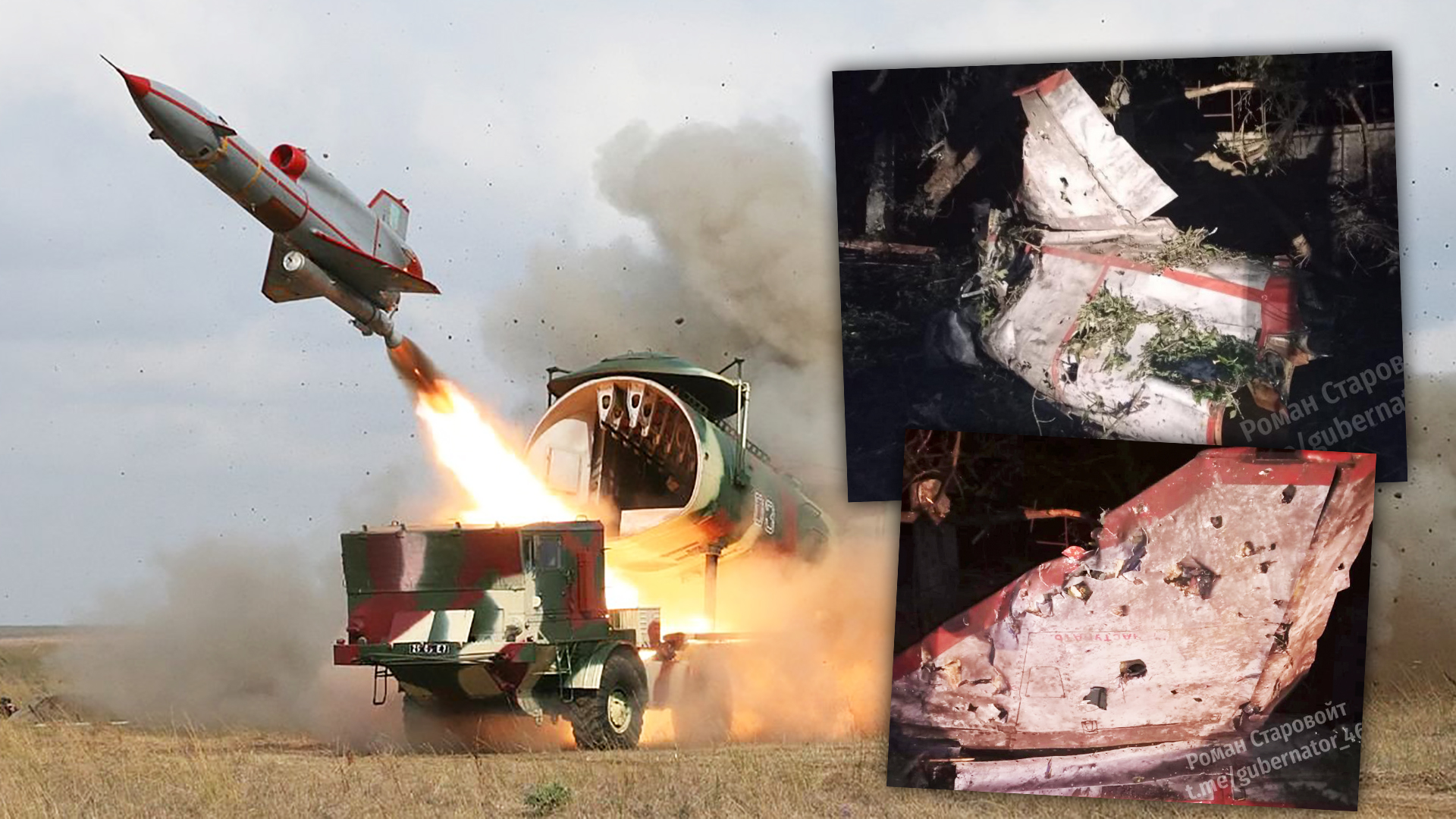A Ukrainian Tu-143 jet-powered drone, dating from the late Cold War era, has been shot down in western Russia, according to the claim of one local official. Originally a reconnaissance drone, the Tu-143 — also known as the Reys, meaning voyage in Russian — is closely related to the Tu-141, an example of which crashed in Croatia in March, in a bizarre and still-unexplained incident that we reported on here. The Tu-141 in Croatia reportedly carried an explosive warhead and the appearance of a broadly similar drone in Russia now further hints at Ukraine potentially having adapted these unmanned aerial vehicles as vengeance weapons.
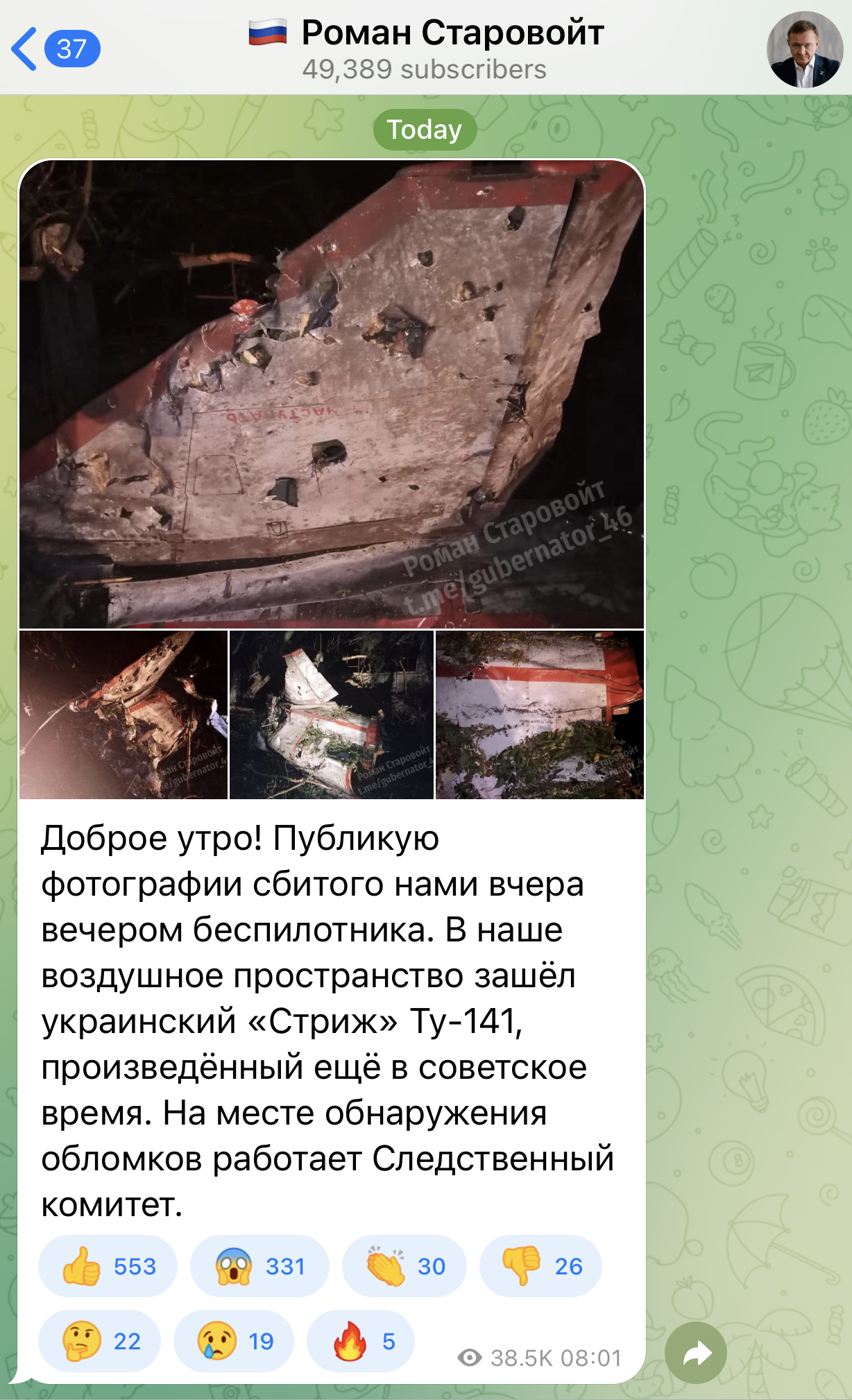
Photos showing the wreckage of the tail section of a Tu-143 were posted to the Russian Telegram instant messaging service this morning, by the governor of Kursk Oblast in western Russia, Roman Starovoyt. While badly mangled, the parts shown in the four images certainly appear to be from a Tu-143 drone. Alongside the photos, Starovoyt posted the following text:
“Good morning. I am publishing pictures of the drone we shot down last night. A Soviet-era Ukrainian Tu-141 Strizh flew into our airspace. The Investigative Committee is working at the site where the wreckage was found.”
While misidentified as the larger Tu-141, the drone appears to have damage that could be consistent with the detonation of a fragmentation warhead from a surface-to-air missile, with multiple small punctures in the skin of the airframe like those that can result from shrapnel. However, there is no way to confirm this. It is also possible that the drone crashed, either deliberately or due to some kind of malfunction, although the unique nature of the damage seen would be puzzling. The exact location of the wreckage was also not provided.
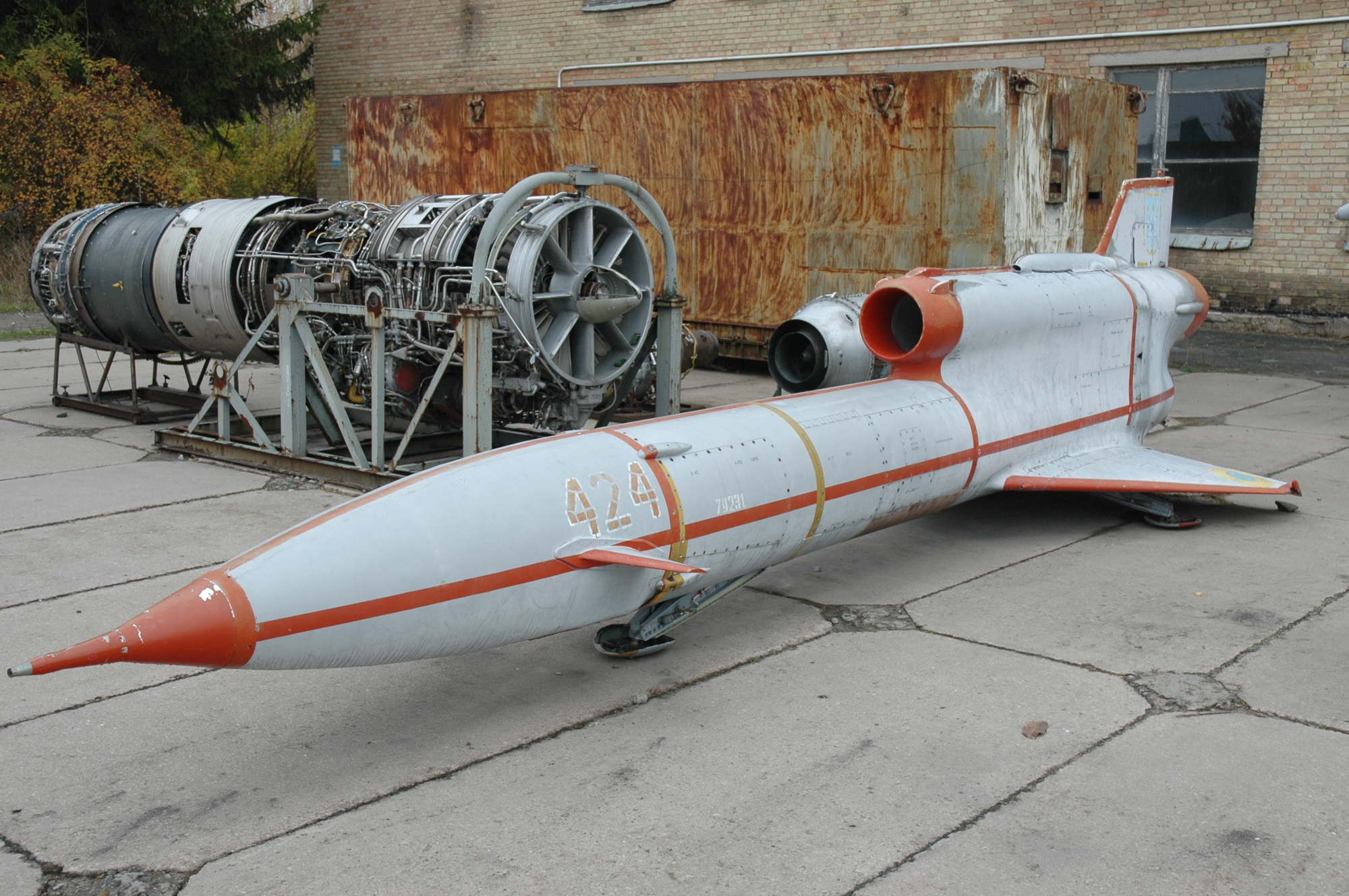
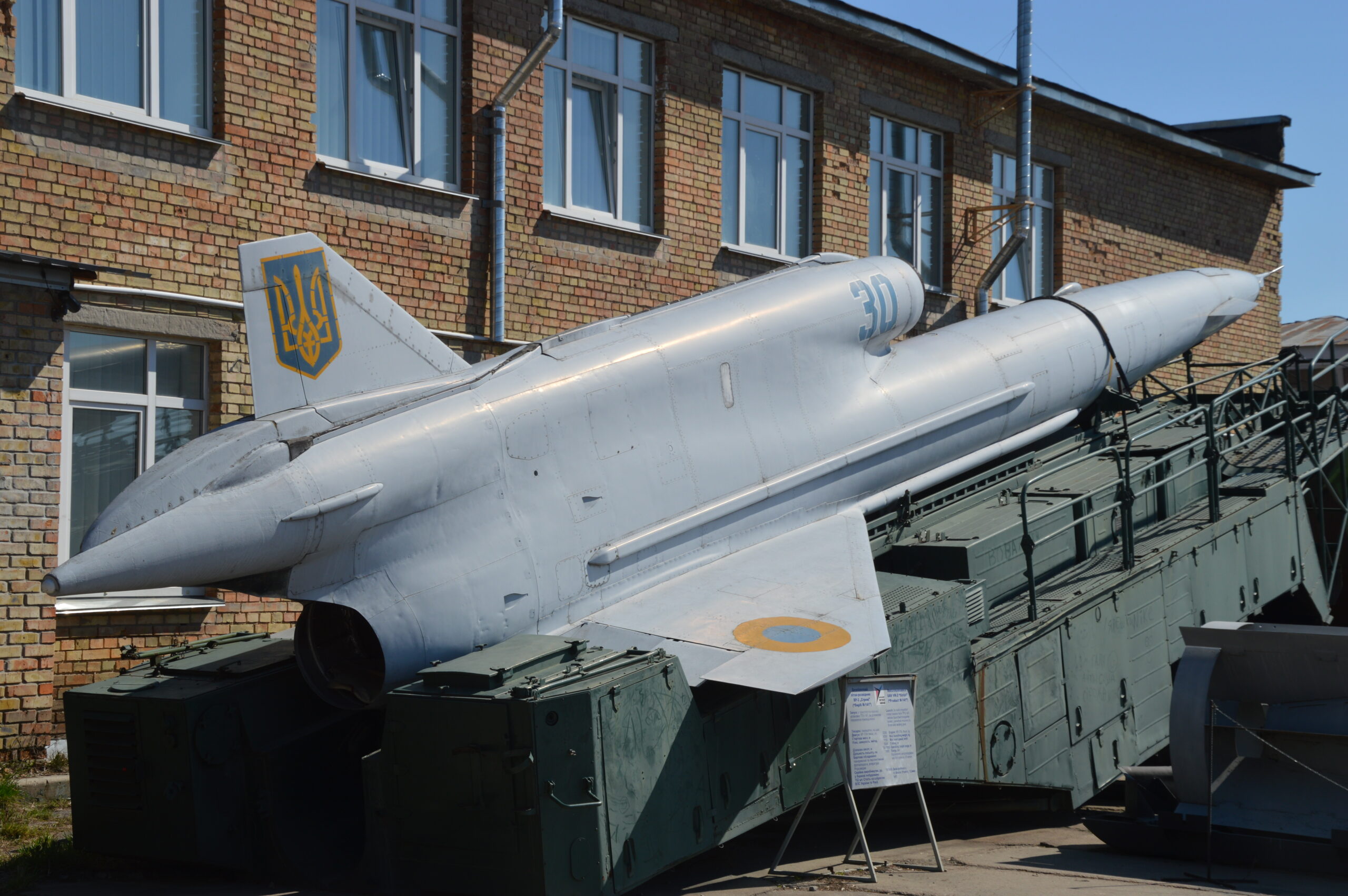
Furthermore, we can’t say for certain that this was a Ukrainian-operated drone, although that also seems likely. After all, Ukrainian Tu-143s have previously featured in the Russo-Ukrainian conflict, with at least one example reportedly being shot down by Russian air defense systems over Ukraine in April.
Starovoyt did not hypothesize what the latest Ukrainian drone was doing over Russian territory and whether it was engaged on a reconnaissance or strike mission, or whether its presence was intended to trigger or confuse Russian air defense systems.
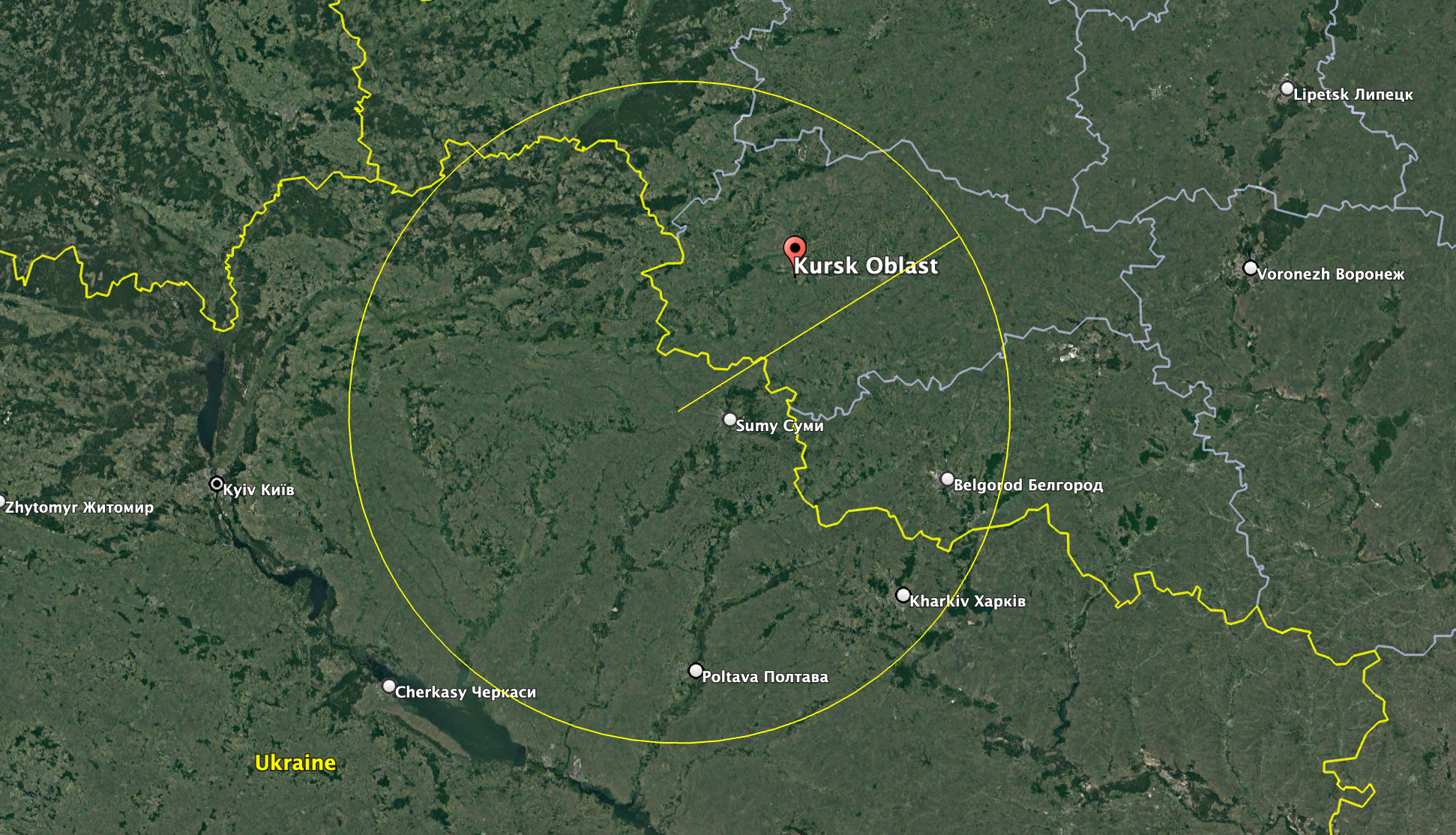
The Tu-141 and Tu-143 were both developed during the Cold War for tactical reconnaissance missions, carrying optical cameras, and latterly also TV and infrared sensors. However, it’s been suggested that Ukrainian-operated drones of these types have been used in the current conflict to locate Russian ground-based air defense systems, revealing their presence so that they can be avoided by Ukrainian aircraft and/or attacked. Having fast-moving jet-powered drones operating over Russian air defenses could also help to simply overwhelm them, increasing the chances of survival for Ukrainian aircraft.
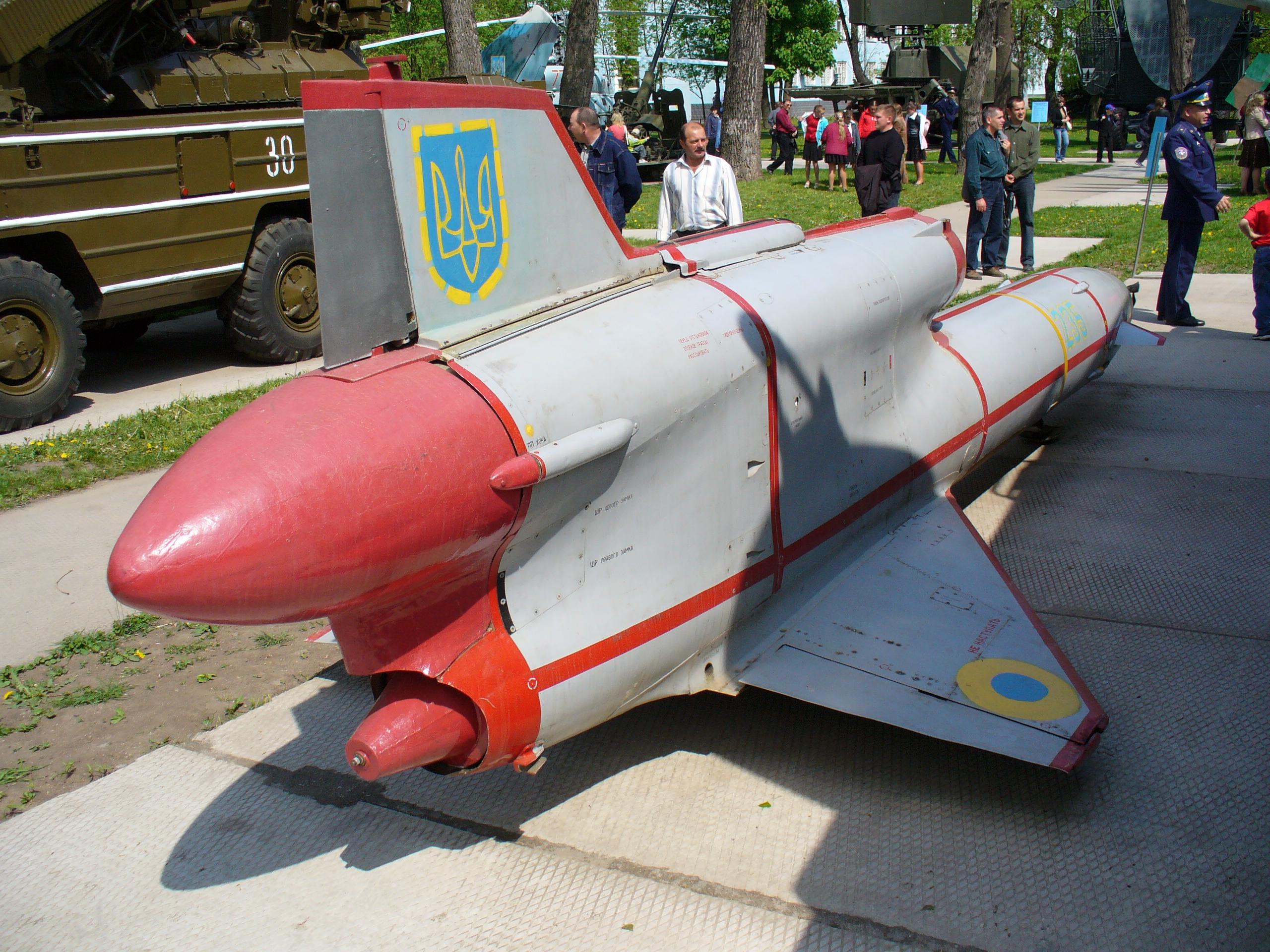
Something similar could be a possibility in the case of the Tu-143 downed over Kursk Oblast, with one or more of these drones perhaps being used as decoys to cover a Ukrainian strike on Russian territory. In the past, there have been unconfirmed reports of Ukrainian Mi-24 Hind assault helicopters attacking infrastructure on the Russian side of the border, while a ‘kamikaze’ drone strike on a Russian oil facility using two small propeller-driven unmanned aerial vehicles earlier this month bears all the hallmarks of a Ukrainian operation, too.
Then there is the possibility of the Tu-143 itself having been engaged on some kind of strike mission, which appears the most likely explanation. While there is no definitive confirmation that Tu-141s and Tu-143s have been adapted as one-way strike drones, the fact that the Tu-143 that crashed in Croatia apparently carried some kind of warhead would seem to point toward this.
That Tu-141 came down in Zagreb, the Croatian capital, on March 10 this year. The Croatian Defense Minister subsequently said that traces of explosives and components of an aerial bomb were found in the impact crater.
Imagery of the Tu-141 that crashed in Zagreb in March:
At the time, we noted how only Ukraine was actively using the earlier Tu-141, having reinstated the drones to service after Russia’s annexation of Crimea in 2014. But we did also note that it was possible that Russia might have taken some Tu-141s out of storage to use as air defense decoys or for other more clandestine duties related to the conflict in Ukraine. Russia does use Tu-143s as target drones, so the same caveat applies to the drone that came down in Kursk Oblast last night.
Video of a Ukrainian Tu-143 reportedly shot down by pro-Russian forces in the Donbas after the outbreak of the Russo-Ukrainian War in 2014:

The Zagreb Tu-141 and at least one example that supposedly crashed in Crimea during the current conflict also seem to have worn Soviet-era red star markings. That led to some speculation that they could have been Russian examples returned to action. More likely, however, is that they were recently pulled from long-term storage in Ukraine and had not yet received Ukrainian markings when they were lost. Alternatively, recently applied Ukrainian insignia could have been erased in the crashes.
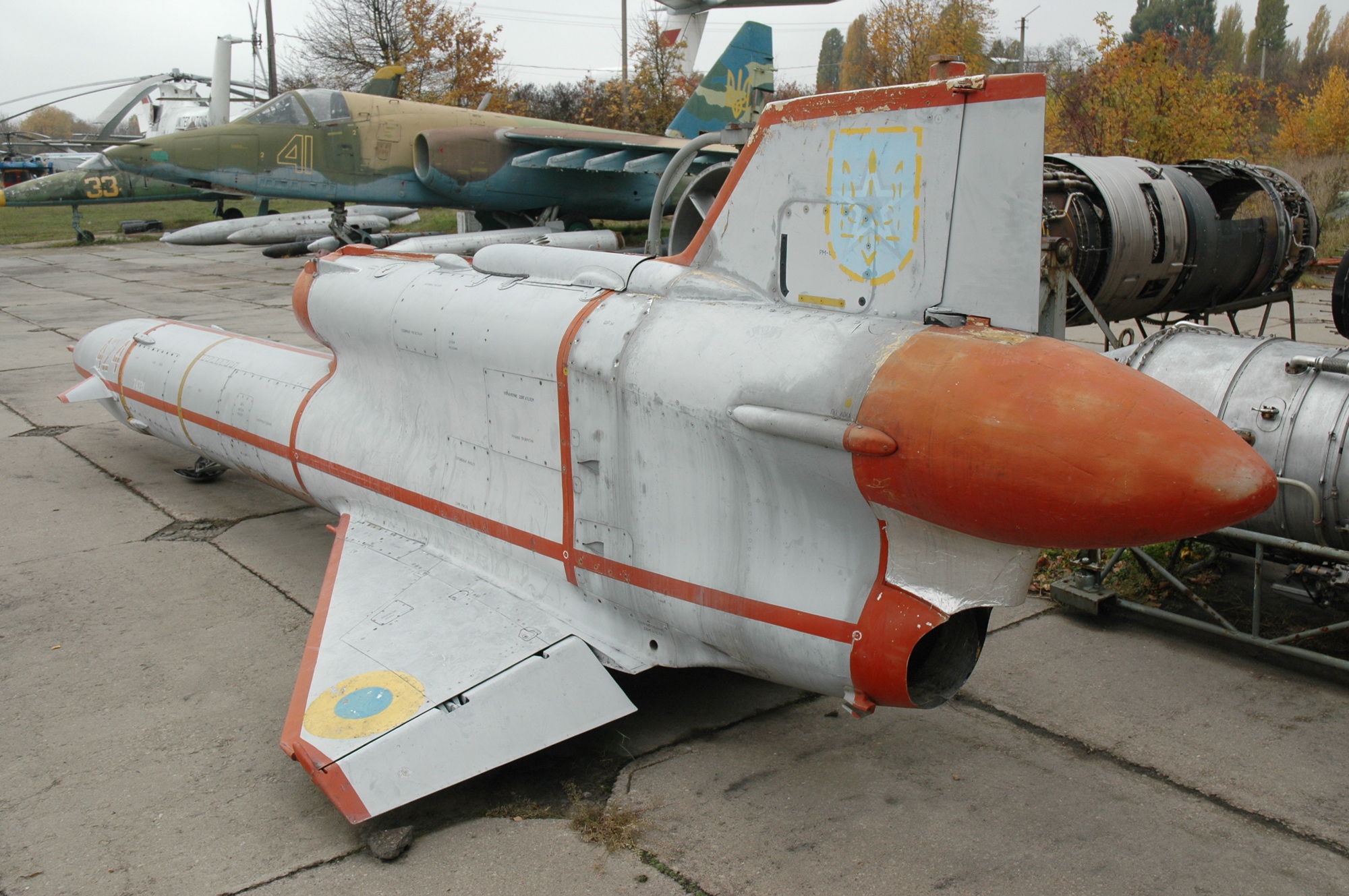
Concurrent with Starovoyt’s post showing the Tu-143 wreckage, unconfirmed reports began to surface of a possible strike launched against the Russian airbase at Kursk-Khalino, home to a regiment of Su-30SM Flanker multirole fighters of a type that has been widely employed in the conflict in Ukraine. Videos posted to social media show a plume of smoke and the sounds of explosions, which some have claimed came from the vicinity of the airbase. At this stage, that cannot be confirmed and it is equally unclear if the Tu-143 was involved in the same incident.
There is also still no clear answer to how the Zagreb drone was actually armed, although removing the original reconnaissance gear and installing some kind of warhead internally seems the most likely explanation. Then again, keeping the installation for at least one of the parachutes, which are used to bring the drone down to a safe landing, remains puzzling, if a one-way mission was planned. Overall, these kinds of drones are broadly similar to cruise missiles, to begin with, and adapting them for a strike mission might not be a huge technological challenge. As well as rigging them up with a high-explosive warhead it would involve programming them to end their flight at a target area.
While a bomb-armed drone flying from Ukraine to the capital of another NATO country is seemingly inexplicable, with the exception of some kind of serious navigation error, flying a Tu-143 across the border into western Russia would clearly make a lot more sense for the Kyiv regime. Interestingly, at least one photo subsequently posted to social media appears to show a recovery parachute from the Tu-143. This looks fairly small, suggesting, perhaps, that it is the brake chute intended to slow the drone down before the main chute deploys. With the ability to land at a predetermined area, actually deploying the chute before landing and detonating does also make some sense, as it would provide a degree of precision without extensive alterations.
As a primitive cruise missile, the Tu-143 could indeed serve as a functional vengeance weapon aimed at hitting the Russian military and Russian infrastructure behind its own lines. With a range of around 125 miles compared to roughly 650 miles for the larger Tu-141, the Tu-143 would still be able to fly one-way missions to hit Russian targets closer to the Ukrainian border, including being able to cover most of Kursk Oblast from a launching location close to the Ukrainian side of the border. While not extremely precise, these drones could certainly be targeted at a larger facility or infrastructure target.
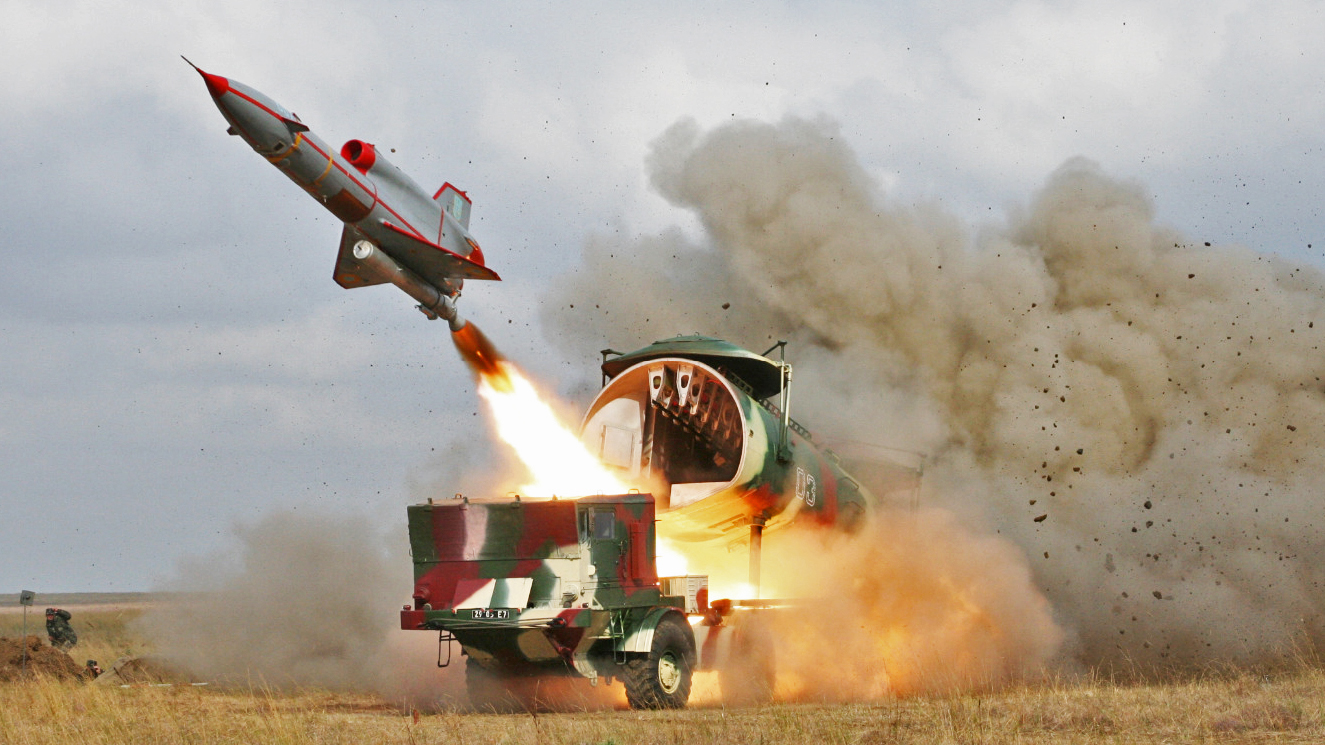
A raid of this kind would also seem to align with increasing reports of Ukrainian activity beyond its borders. A recent account in the Times of London described how troops from the Shaman battalion, a nickname given to Ukraine’s 10th Special Forces Detachment, have been taking part in cross-border sabotage missions.
“The exact targets are classified but the teams’ forays across the border help to explain how Russian oil refineries, ammunition depots, and communications networks have been mysteriously sabotaged,” the paper reported. Very similar kinds of infrastructure within Russia have been subjected to apparently unexplained explosions and fires in the last few months, too. We’ve written about the results of such potential sabotage several times, including here and here.
As with much of this latest episode, the details of the Tu-143’s mission and whatever happened in Kursk Oblast last night remain highly mysterious. We will, however, continue to keep you updated as this unusual story develops.
Contact the author: thomas@thedrive.com
